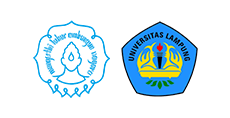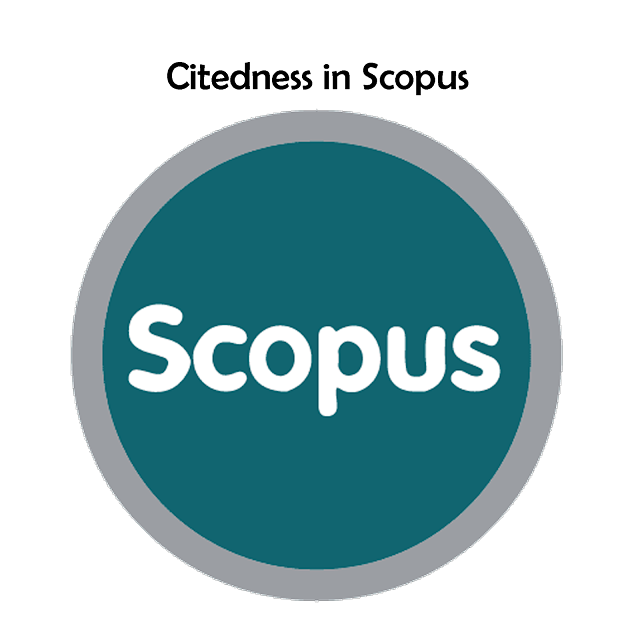Integration of Ubiquitous Technology in Universal Design for Learning (UDL) to Support Inclusive Education
Abstract
Keywords
Full Text:
PDFReferences
Abdhul, Y. (2021). Studi pustaka: Pengertian, tujuan dan metode. Deepublish Store. https://deepublishstore.com/blog/studi-pustaka/
Alférez-Pastor, M., Collado-Soler, R., Lérida-Ayala, V., Manzano-León, A., Aguilar-Parra, J. M., & Trigueros, R. (2023). Training digital competencies in future primary school teachers: A systematic review. Education Sciences, 13(5), 461. https://doi.org/10.3390/educsci13050461
Almufareh, M. F., Tehsin, S., Humayun, M., & Kausar, S. (2023). Intellectual disability and technology: An artificial intelligence perspective and framework. Journal of Disability Research, 2(4). https://doi.org/10.57197/jdr-2023-0055
Augsburg University. (n.d.). CLASS disability resources. Retrieved July 31, 2025, from https://www.augsburg.edu/class/groves/assistive-technology/everyone/
Azizah, N., & Hendriani, W. (2024). Implementasi penggunaan teknologi digital sebagai media pembelajaran pada pendidikan inklusi di Indonesia. Jurnal Educatio FKIP UNMA, 10(2), 644–651. https://doi.org/10.31949/educatio.v10i2.8586
Banes, D., Hayes, A., Kurz, C., & Kushainagar, R. (2020). Using information communications technologies to implement universal design for learning: A working paper from the Global Reading Network for enhancing skills acquisition for students with disabilities. USAID.
Callahan, L. (2022). Educators’ perceptions of the universal design for learning framework in support of economically disadvantaged third and fourth grade students. [Master's thesis, University of New England]. https://dune.une.edu/cgi/viewcontent.cgi?article=1425&context=theses
Chairunnisa, C., & Rismita, R. (2022). Educational challenges for children with special needs in inclusive primary schools. Jurnal Ilmiah Sekolah Dasar, 6(1), 48–56. https://doi.org/10.23887/jisd.v6i1.39722
Deroncele-Acosta, A., & Ellis, A. (2024). Overcoming challenges and promoting positive education in inclusive schools: A multi-country study. Education Sciences, 14(11), 1169. https://doi.org/10.3390/educsci14111169
European Agency for Special Needs and Inclusive Education. (2022). Inclusive digital education. https://www.european-agency.org/sites/default/files/Inclusive_Digital_Education.pdf
Irdamurni, I., & Taufan, I. (2019). Implementation of speech to-text application for deaf students on inclusive education course. Journal of ICSAR, 3(2), 38–40.
Jwad, N., O’donovan, M. A., Leif, A., Knight, E., Ford, E., & Buhne, J. (2022). Universal design for learning in tertiary education: A scoping review and recommendations for implementation in Australia. Australian Disability Clearinghouse on Education and Training.
Kemendikbud. (2024). Merdeka belajar: Menjaga keberlanjutan transformasi pendidikan Indonesia. Kementerian Pendidikan dan Kebudayaan. https://www.kemdikbud.go.id/main/blog/2024/02/merdeka-belajar-menjaga-keberlanjutan-transformasi-pendidikan-indonesia
Lakha, S. (2023). Understanding cognitivism: A learning theory. Educasciences.Org. https://www.educasciences.org/learning-theories-cognitivism
Legi, H., Damanik, D., & Giban, Y. (2023). Transforming education through technological innovation in the face of the era of society 5.0. Educenter: Jurnal Ilmiah Pendidikan, 2(2), 102–108. https://doi.org/10.55904/educenter.v2i2.822
Mariyono, D. (2024). Strategi pembelajaran dari teori ke praktik: Pendekatan pembelajaran kolaboratif di perguruan tinggi (1st ed.). CV. Idebuku.
Maslahah, S., Musayarah, S., Sidik, S. A., Abadi, R. F., & Septiani, S. (2023). Pengembangan modul inovasi pendidikan berbasis universal design for learning (UDL) yang inklusif bagi mahasiswa disabilitas. Jurnal Unik Pendidikan Luar Biasa, 8(2), 1–8. https://doi.org/10.30870/unik.v8i2.23157
McMahon, D. D., & Walker, Z. (2019). Leveraging emerging technology to design an inclusive future with universal design for learning. Center for Educational Policy Studies Journal, 9(3), 75. https://doi.org/10.26529/cepsj.639
Mujiono, M., Degeng, I. N. S., & Praherdhiono, H. (2018). Pengembangan pembelajaran sistem blended berbasis universal design for learning untuk kelas inklusif. Jurnal Pendidikan: Teori Penelitian Dan Pengembangan, 3(3). https://doi.org/10.17977/jptpp.v3i6.11163
Mukti, H., Bagus, I., & Dantes, N. (2023). Analisis pendidikan inklusif: Kendala dan solusi dalam implementasinya. Kaganga (Online), 6(2), 761–777. https://doi.org/10.31539/kaganga.v6i2.8559
Muslim, M. (2022). Universal design for learning: Upaya peningkatan hasil belajar anak berkebutuhan khusus di kelas inklusi. Seminar Nasional Program Pascasarjana Universitas PGRI Palembang, 1, 163–167.
Puspitosari, D., Diana, Y., Aziz, A., & Aisyah, A. (2024). Pendidikan bahasa inggris di era digital (1st ed.). PT. Media Penerbit Indonesia.
Rahajeng, U. W., Hendriani, W., & Paramita, P. P. (2024). Navigating higher education challenges: A review of strategies among students with disabilities in Indonesia. Disabilities, 4(3), 678–695. https://doi.org/10.3390/disabilities4030042
Rahmawati, R., Fitriyasari, M., & Atsani, M. R. (2024). Current learning media: Using augmented reality (AR) as an alternative digital learning media. International Journal of Teaching and Learning, 2(11), 2997–3008.
Sari, M., & Asmendri, A. (2020). Penelitian kepustakaan (library research) dalam penelitian pendidikan IPA. NATURAL SCIENCE: Jurnal Penelitian Bidang IPA Dan Pendidikan IPA, 6(1), 41–53. https://doi.org/10.15548/nsc.v6i1.1555
Shoaib, M., Fitzpatrick, D., & Pitt, I. (2023). Assistive technology-based solutions in learning mathematics for visually-impaired people: Exploring issues, challenges and opportunities. Multimedia Tools and Applications, 82(29), 46153–46184. https://doi.org/10.1007/s11042-023-17409-z
Sinambela, S. M., Lumbantobing, J. N. Y., Saragih, M. D., Mangunsong, A. F., Nisa, C., Simanjuntak, J. P., & Jamaludin, J. (2024). Kesenjangan digital dalam dunia pendidikan masa kini dan masa yang akan datang. Jurnal Bintang Pendidikan Indonesia, 2(3), 15–24. https://doi.org/10.55606/jubpi.v2i3.3003
Singh, S. (2024). Inclusive education: Promoting equity and access for students with disabilities. Global International Research Thoughts, 12(1), 30–35. https://doi.org/10.36676/girt.v12.i1.109
Suhendri, S. (2020). The challenges of inclusive education in Indonesia. Journal of Research in Business, Economics, and Education, 2(5), 1002–1007.
Suwahyo, B. W., Setyosari, P., & Praherdhiono, H. (2022). Pemanfaatan teknologi asistif dalam pendidikan inklusif. Edcomtech, 7(1), 51–63. https://doi.org/10.17977/um039v7i12022p055
Taufiqurrahman, M. (2022). Penerapan teknologi dalam pendidikan inklusif: Tantangan dan solusi. Progressa, 6(1), 1–15. https://doi.org/10.32616/pgr.v6.1.454.1-15
Tyas, D., Nur, A., Hasyim, H., Mappaompo, A., Rahmi, S., & Rukmini, B. S. (2022). Pendidikan inklusif: Konsep, implementasi, dan tujuan. CV. Rey Media Grafika.
W3C. (2023). Web content accessibility guidelines (WCAG) 2.1. W3.Org. https://www.w3.org/TR/WCAG21/
Wajdi, F. (2021). Manajemen perkembangan siswa SD melalui peran guru dan orang tua pada masa pandemi. Jurnal Administrasi Dan Manajemen Pendidikan, 4(1), 41. https://doi.org/10.17977/um027v4i12021p41
Wang, B., Ramli, S. H., Roslan, S., Rizal, A., & Li, Z. (2024). A review on application of mobile media in personalized special education. Environment and Social Psychology, 9(8). https://doi.org/10.59429/esp.v9i8.2910
Yenduri, G., Kaluri, R., Rajput, D. S., Lakshmanna, K., Gadekallu, T. R., Mahmud, M., & Brown, D. J. (2023). From assistive technologies to metaverse: Technologies in inclusive higher education for students with specific learning difficulties. arXiv.Org. https://doi.org/10.48550/arXiv.2305.11057
Zascavage, V., & Winterman, K. G. (2009). What middle school educators should know about assistive technology and universal design for learning. Middle School Journal, 40(4), 46–52.













